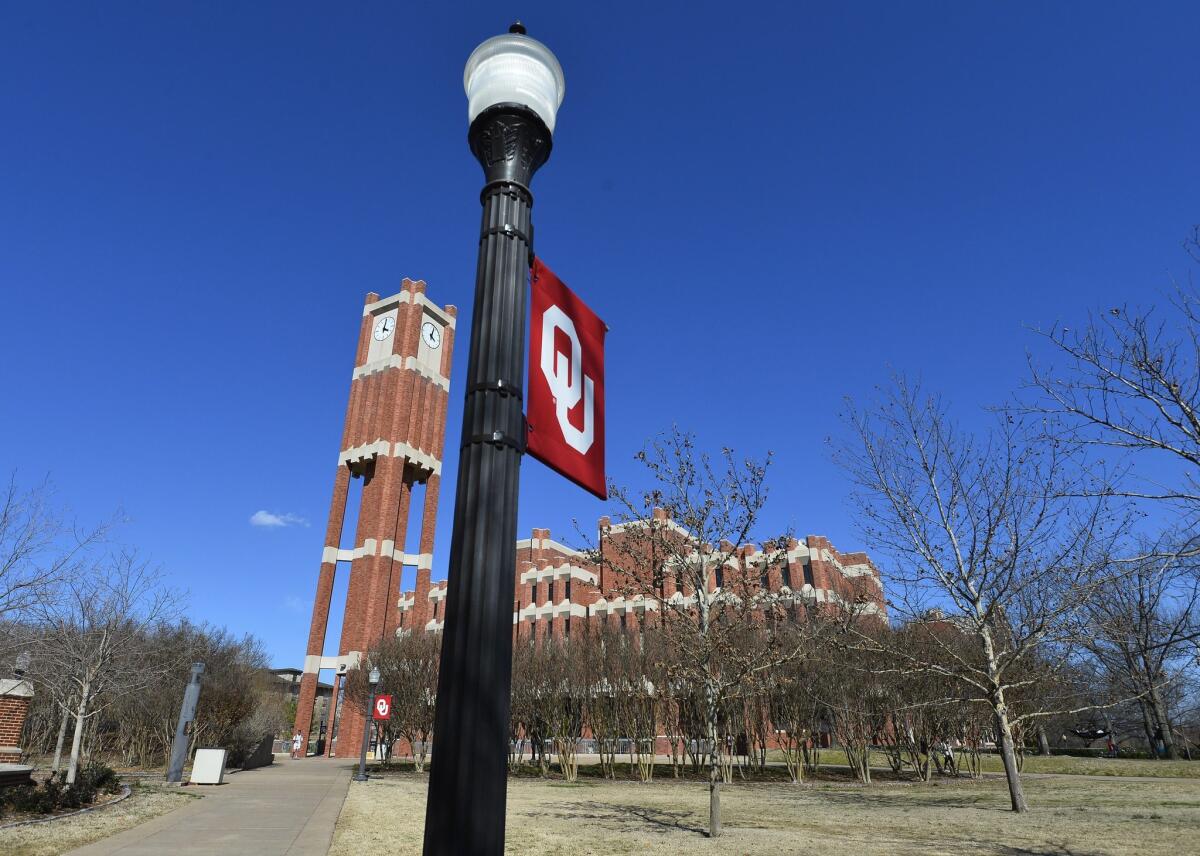Editorial: University of Oklahoma racial incident shows we still have far to go

The 50th anniversary commemorations of the civil-rights march in Selma, Ala., reminded Americans of how far we have come in the battle against racism, and how far we still have to go. Just this week, the nation was rattled by an ugly example of the latter, as a video surfaced showing members of a University of Oklahoma fraternity singing in unison about its discriminatory practice of excluding African Americans and even joking about lynchings. “You can hang ‘em from a tree / But he’ll never sign with me,” they chanted. “There will never be a nigger SAE.”
The repercussions were satisfyingly swift and clear-cut. The university’s president denounced the fraternity members, closed their house — while Sigma Alpha Epsilon pulled recognition from the chapter — and declined to offer them help in finding new accommodations.
Where the response might have gone a step too far was with the expulsion of two members who were identified as ringleaders. Though there is no defending the song or those who chanted it so gleefully, their right to do so is strongly protected.
As a public institution, it is particularly difficult for the university to limit student speech, because the Constitution forbids most government restrictions on speech. That is why, for example, the Supreme Court ruled in 1978 that neo-Nazis must be allowed to march in Skokie, Ill., which had a large Jewish population.
There are limits, of course. Courts have ruled that if racist or otherwise offensive speech threatens others — if African American students had reason to fear for their safety as a result of the video — or disrupts the ability of a school to carry out its educational function, the university would be within its rights to expel the offenders. University President David Boren cited the latter, as well as the creation of a hostile environment, in ordering the ringleaders gone from his campus. But the threshold for disruption must be higher than simply causing discomfort or controversy. At this point, the video doesn’t appear to meet that mark; if Boren thinks it does, he should provide a clearer explanation.
This case tests the limits of tolerance for defending hateful speech. Lynchings were still a very recent memory in the days of the Selma march: Nearly 4,000 African American men, women and children were tortured and killed in frequently public, gleeful spectacles from Reconstruction to 1950. The nonprofit Equal Justice Initiative hopes to place markers at these sites in 12 Southern states so that this memory is not lost.
Expelling the offending students might quiet things down more quickly at the University of Oklahoma. But that might not be the better outcome. The incident has revealed undercurrents of racism — Sigma Alpha Epsilon is now investigating reports of similar problems in other chapters, and minority students at the school are calling attention to less dramatic incidents of racial insensitivity — that should be examined and rooted out, rather than forgotten.
Follow the Opinion section on Twitter @latimesopinion and Facebook
More to Read
A cure for the common opinion
Get thought-provoking perspectives with our weekly newsletter.
You may occasionally receive promotional content from the Los Angeles Times.






